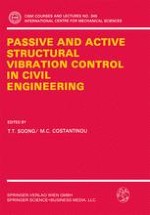Base isolation, passive energy dissipation and active control represent three innovative technologies for protection of structures under environmental loads. Increasingly, they are being applied to the design of new structures or to the retrofit of existing structures against wind, earthquakes and other external loads. This book, with contributions from leading researchers from Japan, Europe, and the United States, presents a balanced view of current research and world-wide development in this exciting and fast expanding field. Basic principles as well as practical design and implementational issues associated with the application of base isolation systems and passive and active control devices to civil engineering structures are carefully addressed. Examples of structural applications are presented and extensively discussed.
